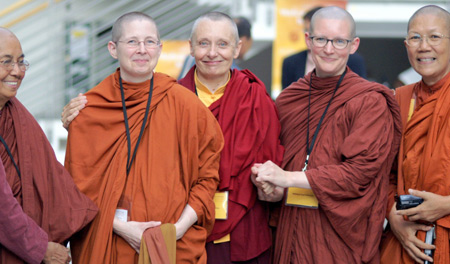Trois billets de la Revue
Present
"The Voices and activities of Theravada Buddhist women"
depuis le site de Alliance for Bikkhunis
(ici traduction en français par Google)
Ven. Sobhana Bhikkhuni Moves West
Aranya Bodhi Awakening Forest Hermitage is on the way to becoming a comfortable year-round setting for Buddhist monastic women to live in a quiet forest environment... to practice solitary meditation... to receive alms food offered in faith... to discuss the Dhamma... and to be part of a democratically organized sangha
in accord with the ancient monastic code. Efective July 1, 2010 Ayya Sobhana will become the first full-time resident (and prioress) of Aranya Bodhi, and a full-time co-leader of the hermitage project. She has been a student of Bhante Gunaratana since 1989, served on the Board of Direc- tors of the Bhavana Society during the 1990s, and took novice ordination at the Bhavana Society in 2003; her full ordina- tion was at Dambulla, Sri Lanka, in 2006.
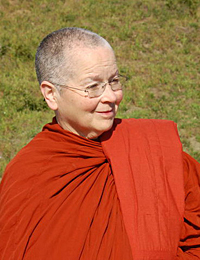
Graciously, Ayya Sobhana’s mentor, Bhante Gunaratana, has fully blessed and encour- aged Ven. Sobhana Bhik- khuni’s partici- pation in Aranya Bodhi Hermitage, and has given her formal independence—meaning that she is competent to independently practice and to serve the Dhamma. The Bhikkhuni Sangha is very appreciative of Bhante Gunaratana’s unstinting outreach to women over many years. 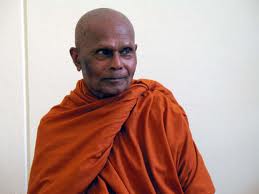
He has announced his support for bhikkhunis to establish their own independent centers, and Bhavana Society will donate a starter library of Dhamma books to the Aranya Bodhi Hermitage. Bhante Gunaratana has pledged his ongoing support: to partici- pate in women’s full ordination when invited to do so; to visit Aranya Bodhi to teach or lead retreats; to continue as an Senior Advisor to the North American Bhikkhuni Association; and to invite qualified monastic women to lead public retreats at the Bhavana Society.
Ven. Kusuma Bhikkhuni Currently on USA Tour
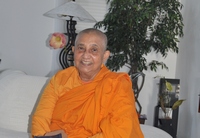
During the month of May, Ven. Kusuma Bhikkhuni is traveling throughout the USA teaching meditation and giving Dhamma talks. Recently she spent a week at Mahapajapati Monastery with Ven. Gunasari Bhikkhuni in Yucca Valley, California. From there, she travelled to Colorado to teach at Rocky Moun- tain Insight in Colorado Springs, and on to Minnesota.
Ayya Kusuma, MA, Ph.D, is a fully ordained Sri Lankan bhikkuni who has pioneered the re-establishment of the Theravada Bhikkhuni Sangha in her country. In 1996, she became the first woman in nearly 1,000 years of Sri Lankan history to don the robes of a bhikkuni.
Recalling the struggle to gain recogni- tion for the bhikkhuni movement, she has said, “The bhikkhuni higher ordination was taboo. Women who entered the dasa sil matha (ten precept nun) movement had no income, no education, no sanghika dana, and no sanghika property; they lead a hard life and were not well regarded by a society that had long lost the tradition of Bhikkhuni Order.” Today, there are over 1,000 bhikkhunis and more than 4,000 dasa sil matha iun Sri Lanka. There are over 40 bhikkhunis with university degrees, and several have completed MA’s.
Abstract: The Four Assemblies and the Foundation of the Order of Nuns
by Bikkhu Analayo
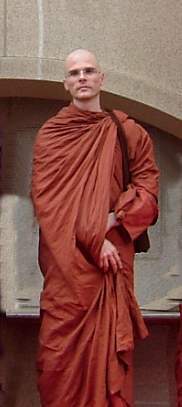
According to the account of the foundation of the order of nuns, found with some variations in the different Vinayas preserved in Chinese, Pali, Sanskrit and Tibetan, the Bud- dha was quite hesitant to permit women to go forth and was persuaded by his monk disciple and attendant Ananda to do so only after repeated pleading. Not only was the Buddha unwill- ing to institute the order of nuns, but he supposedly even made the prediction that this step would cause his teaching to last for a period of only five hundred years.
This hesitation and prediction have had and still have a rather negative impact on the way the order of nuns is per- ceived and thus form one of the contributing factors that make it so difficult to establish an order of nuns in those traditions where the bhiksuni ordination does not at present exist.
A close inspection of the account of the foundation of the order of nuns brings to light several inconsistencies. As already noticed by other scholars, the eight special rules that according to this account were laid down as a pre-condition for the found- ing of the order of nuns presuppose an already existing bhiksu- ni-sangha, so that, in the form in which they have come down to us, these eight rules could only have been formulated at a time when nuns were already in existence. Some canonical pas- sages do in fact refer to the ehi bhikkuni type of ordination for nuns, indicating that in the earliest stages of the history of the Buddhist order nuns were ordained with this simple formula, instead of the procedure referred to in the eight special rules.
Another problem is a chronological one, a problem that to my knowledge so far has not been noticed by other scholars. According to what can be gleaned from the relevant sources, the foundation of the order of nuns would have taken place in the 5th or 6th year of the Buddha’s ministry. A closer examina- tion of the canonical sources brings to light that at this early point of time Ananda still had to become the Buddha’s atten- dant, in fact he still had to ordain. This makes it impossible for him to act as an intermediary in the way his role is depicted in the different Vinayas.
In addition to these internal inconsistencies, the account of the foundation of the order of nuns also does not concord with what can be gleaned from other canonical discourses regarding the Buddha’s attitude towards the order of nuns and the role the bhiksuni-sangha played in early Buddhism.
Particularly noteworthy is a passage found in the Chinese, Pali, Sanskrit and Tibetan versions of the Mahaparinirvana-su- tra, which makes it clear that right after his awakening the Bud- dha must already have decided to found the order of nuns, since according to this passage he told Mara that he would not pass away until his nun disciples were well established and trained. This passage directly contradicts the hesitancy to establish the order of nuns that the above Vinaya accounts attribute to the Buddha.
The Mahaparinirvana-sutra not the only such instance, in fact quite a number of discourses make it clear that the order of nuns, as one of the four assemblies, was an integral part of early Buddhism. The Mahavacchagotta-sutta of the Pali Canon and its Madhyama-agama parallel, for example, make a point of highlighting that the existence of accomplished practitioners in each of these four assemblies is what makes the Buddha’s teaching “complete” in every respect. These and other instances make it clear that, without an order of nuns, the transmission of the Dharma is incomplete and an essential aspect of its inner life is missing. In view of such passages, preserved by different early Buddhist schools, it becomes evident that the account of the foundation of the order of nuns does not only suffer from internal inconsistencies, but also stands in direct contradiction to other canonical passages.
Besides, the prediction given in this account, unlike several other predictions attributed to the Buddha in various sutras, did not come true. From archaeological evidence we know that even in the 3rd and 4th century nuns were active participants in Indian Buddhism, so that they, and with them the Dharma, were still flourishing far beyond the five-hundred years’ period envisaged in the Vinayas.
In sum, in view of a predication that did not come true and a hesitance that is directly contradicted by other canonical sources, it seems more probable that the Buddha was positive about the foundation of the order of nuns and that the Vinaya account of the foundation of the order of nuns, due to some transmission problem, does not accurately reflect the situation.
In contrast to the negative impression created by the account of the foundation of the order of nuns in the different Vinayas, the testimony of other canonical sources indicates that for the continuation and growth of the Dharma each of the four assem- blies is an essential requirement. From this it would follow that every effort should be made to ensure that by establishing of an order of nuns in each of the different Buddhist traditions the ideal conditions for the growth and spread of the Dharma in the modern world are being provided.
